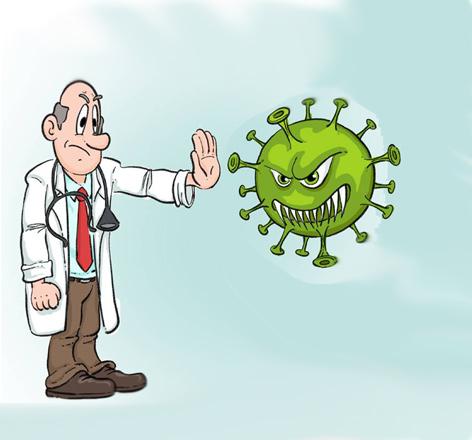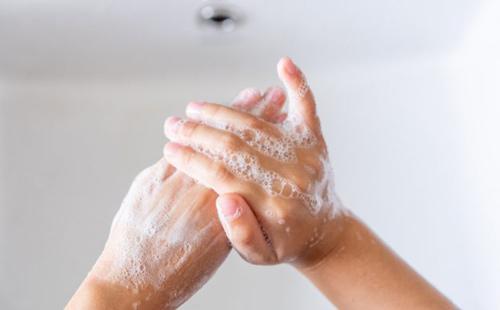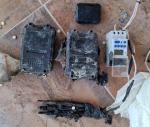You are here
Answers to your most common questions about the Wuhan coronavirus
By The Seattle Times (TNS) - Jan 29,2020 - Last updated at Jan 29,2020

Photo courtesy of wordpress.com
SEATTLE — As a new type of coronavirus rages through China and spreads to other countries the public understandably has a lot of questions about the illness and how to avoid it.
As of late Monday afternoon, more than 2,700 people had been infected and 81 had died, with the vast majority of cases in China. Five people in the United States have been confirmed to have the coronavirus, including a Snohomish County man who fell ill after returning from a trip to Wuhan almost two weeks ago — before China or the United States had implemented travel restrictions to stem the outbreak.
We’ve been asking you, our readers, what you want to know about the novel coronavirus, which is also being called the Wuhan coronavirus, and we’re taking your questions to health care professionals. Below are answers to some common questions that have come in recently: What is a coronavirus, and how does it spread?
Coronaviruses have the ability to mutate and jump from animal to human. The novel coronavirus is believed to have done that at an animal market in Wuhan, a city of 11 million people in central China.
It is now believed to be spreading from person to person, although it’s unclear how easily. So far, that hasn’t happened within the United States, according to public health officials. The risk is much greater in and around Wuhan, where the virus originated.
You may remember outbreaks of SARS and MERS in recent years. Those were also coronaviruses that spread from person to person, generally between close contacts.
“When person-to-person spread has occurred with MERS and SARS, it is thought to have happened mainly via respiratory droplets produced when an infected person coughs or sneezes, similar to how influenza and other respiratory pathogens spread,” according to the federal Centres for Disease Control and Prevention (CDC).
Coronaviruses regularly circulate throughout the region and around the world, and this one probably acts similarly to those, said Dr Robert L. Thompson, chair of Kaiser Permanente Washington’s prevention and control programme.
The new coronavirus has so far mostly affected people older than 60 and those with underlying health issues.
How is the patient in Snohomish County doing? What about people who have come into contact with him?
The patient, a man in his 30s, was in satisfactory condition as of Monday. He’s been in an isolation unit at Providence Regional Hospital in Everett since early last week.
The man had been traveling solo in Wuhan since November. He flew into Seattle-Tacoma International Airport on January 15 and began noticing symptoms a few days later, at which point he contacted his doctor and was hospitalised. When he tested positive for the novel coronavirus, he became the United States’ first confirmed case.
The state Department of Health says the man had “close contact” with 64 people since returning to Washington. All of them are being monitored for symptoms such as a fever and cough.
What about the three University of Washington students who were screened for the novel coronavirus after a trip to Wuhan? Which dorm were they in?
One student, who lives off campus, tested negative.
The other two are in isolation while they await results. Those two live on campus, but UW isn’t saying where. The university has notified their roommates, who are now being monitored by Public Health — Seattle & King County.
Should I avoid Sea-Tac airport and UW’s Seattle campus?
No need to avoid those places, even if your immune system is compromised, and you shouldn’t worry even if you were at Sea-Tac on the same day as the Snohomish County patient, said Jeff Duchin of Public Health — Seattle & King County. The virus isn’t circulating there or anywhere else in the region, he said.
How can I avoid catching the Wuhan coronavirus? Should I wear a mask?
Do what you would do to avoid catching the flu: Wash your hands regularly with soap and water for at least 20 seconds, cover your mouth and nose when coughing and stay home from work or school if you have a fever and cough, Thompson said.
While masks should be worn if you’re having a respiratory issue, especially if you’re at a clinic or hospital, there’s no need to wear one while going about daily life if you’re not sick, Duchin said.
Is it safe to travel to China or other parts of Asia?
The CDC advises people to avoid all nonessential travel to China. For other countries, check the CDC’s latest travel advisories and warnings at cdc.gov/travel/destinations/list.
Can packages containing items made in China carry the Wuhan coronavirus?
In the age of Amazon, a lot of packages are being dropped on doorsteps containing products made in China. But the risk of the coronavirus hitching a ride on those products is very low, according to the CDC, because coronaviruses don’t survive for long on surfaces, especially when being shipped for a period of days or weeks in ambient temperatures.
By Ryan Blethen
Related Articles
By Emily BaumgaertnerIt’s a virus scientists have never seen before.
Americans are watching with alarm as a new coronavirus spreads in China and cases pop up in the United States.
WUHAN, China — China's capital on Monday recorded its first death from a deadly coronavirus as it struggles to contain a rapidly spreading d



















